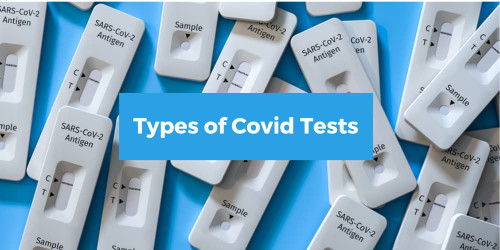In the context of the global health crisis, hand sanitiser has emerged as an essential commodity. However, there are several key questions that people frequently ask, particularly about the safety of hand sanitisers. The most common inquiries are: "Is hand sanitiser flammable?", "Is hand sanitiser toxic?", "Is hand sanitiser bad for your skin?", "Is hand sanitiser safe to eat?" and "Does hand sanitiser burn your eyes?" In this article, we will dissect these concerns and offer practical advice on staying safe around hand sanitiser.
Is Hand Sanitiser Flammable?
Firstly, is hand sanitiser flammable? The answer is yes. Most hand sanitisers contain a high concentration of alcohol – typically between 60% to 95% – which is highly flammable. It's crucial to keep this in mind when using it, particularly in areas where there may be open flames or sparks. This includes kitchens, fireplaces, barbecues, and even certain work environments. Always ensure your hands are completely dry after applying hand sanitiser before engaging in any activities that could cause ignition. These simple steps will help you avoid accidental fires and stay safe around hand sanitiser. For more tips on handling flammable materials safely, visit the Australian Government's Product Safety Australia website.
Is Hand Sanitiser Toxic?
The question "Is hand sanitiser toxic?" is often asked due to the presence of chemicals in many brands. While it's true that some ingredients could be harmful if ingested or exposed to the skin in large amounts, most commercial hand sanitisers are generally safe when used properly. However, consuming hand sanitiser is definitely unsafe. The alcohol and other chemicals in sanitiser can be harmful or even fatal if ingested. Keep it out of the reach of children, and if someone does swallow it, seek medical help immediately. Also, if you have sensitive skin or allergies, you might want to avoid certain brands that include potentially irritating ingredients. Furthermore, it's worth noting that some hand sanitisers may contain methanol, a toxic substance that can be absorbed through the skin and is harmful if swallowed or inhaled. Always check the ingredients on your hand sanitiser and opt for ones with ethanol or isopropanol instead.
The Poisons Information Centre Australia provides more detailed information about the toxicity of such substances.
Is Hand Sanitiser Bad for Your Skin?
This brings us to another common question: is hand sanitiser bad for your skin? The truth is, overuse of hand sanitiser can indeed lead to dry, cracked skin due to its alcohol content. However, this doesn't mean you should stop using it, especially when soap and water aren't readily available. Instead, consider following up sanitiser use with a moisturising lotion or cream to help protect your skin barrier. To mitigate this, choose a sanitiser with moisturising ingredients like aloe vera or glycerol. You can also follow up with a good hand cream to replenish moisture. It's also recommended to rinse your hands with water whenever possible, as this is generally less harsh on the skin.
The Australian Skin Institute offers excellent advice on skin care.
Is Hand Sanitiser Safe to Eat?
The answer is an emphatic no. Hand sanitiser is not safe to eat. It is designed for topical use only and can be toxic if ingested, and can cause serious harm, including nausea, vomiting, dizziness, and in severe cases, can lead to alcohol poisoning. If you or someone else accidentally consumes hand sanitiser, seek medical attention right away. The Australian Government Department of Health provides useful guidelines on poison control and what to do when someone has been poisoned.
Does Hand Sanitiser Burn Your Eyes?
Lastly, let's address the question, "Does hand sanitiser burn your eyes?" The answer is, unfortunately, yes. Hand sanitiser can be very irritating to the eyes due to its alcohol content and other chemicals. If you accidentally get some in your eyes, immediately flush them with water and seek medical attention if the irritation persists. The Optometry Australia website offers more detailed advice on eye care.
Alternatives to Hand Sanitiser
There are also other viable alternatives to hand sanitiser if you want to avoid these concerns altogether. One such alternative is the hand and surface wipes that contain no alcohol, no bleach, no parabens, no soap and completely biodegradable from TouchBio.
Conclusion
All in all, while hand sanitiser is a vital tool in our daily hygiene regimen, it's essential to use it correctly. Be mindful of its flammability, do not ingest it, take steps to protect your skin, and avoid getting it in your eyes. By following these guidelines, you can ensure that you are using hand sanitiser safely and effectively. Remember, hand sanitiser is meant to be a convenient alternative when washing hands with soap and water isn't possible. It's not a replacement for proper hand hygiene. When used correctly and responsibly, hand sanitisers can continue to play a significant role in helping us maintain our health and wellbeing. We hope this article has answered some of your main concerns about hand sanitiser safety. Stay safe, stay informed, and continue practicing good hygiene habits.
Sources:
Product Safety Australia. (n.d.). Product Safety Australia. Retrieved May 29, 2023, from https://www.productsafety.gov.au/
Poisons Information Centre Australia. (n.d.). Poisons Information Centre Australia. Retrieved May 29, 2023, from https://www.poisonsinfo.nsw.gov.au/
Australian Skin Institute. (n.d.). Australian Skin Institute. Retrieved May 29, 2023, from https://www.australianskininstitute.com.au/
Australian Government Department of Health. (n.d.). Poisons Information Centre. Retrieved May 29, 2023, from https://www.health.gov.au/contacts/poisons-information-centre
Optometry Australia. (n.d.). Optometry Australia. Retrieved May 29, 2023, from https://www.optometry.org.au/















